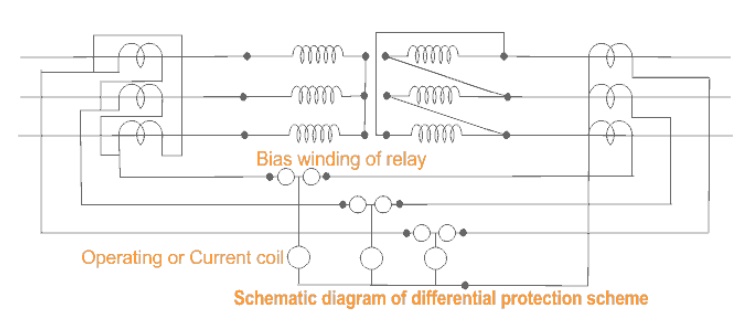Chapter: Power Quality : Over Voltages
Protection of Transformers
Protection of Transformers:
There are different kinds of transformers such as two winding or three winding electrical power transformers, auto transformer, regulating transformers, earthing transformers, rectifier transformers etc. Different transformers demand different schemes of transformer protection depending upon their importance, winding connections, earthing methods and mode of operation etc.
It is common practice to provide Buchholz relay protection to all 0.5 MVA and above transformers. While for all small size distribution transformers, only high voltage fuses are used as main protective device. For all larger rated and important distribution transformers, over current protection along with restricted earth fault protection is applied. Differential protection should be provided in the transformers rated above 5 MVA.
Nature of Transformer Faults:
A transformer generally suffers from following types of transformer fault-
’ā╝ Over current due to overloads and external short circuits,
’ā╝ Terminal faults,
’ā╝ Winding faults,
’ā╝ Incipient faults.
Generally Differential protection is provided in the electrical power transformer ratedmorethan5MVA.
The Differential Protection of Transformer has many advantages over other schemes of protection.
1) The faults occur in the transformer inside the insulating oil can be detected by Buchholz relay. But if any fault occurs in the transformer but not in oil then it can not be detected by Buchholz relay. Any flash over at the bushings are not adequately covered by Buchholz relay. Differential relays can detect such type of faults. Moreover Buchholz relay is provided in transformer for detecting any internal fault in the transformer but Differential Protection scheme detects the same in more faster way.
2) The differential relays normally response to those faults which occur in side the differential protection zone of transformer.
Differential Protection Scheme:
Principle of Differential Protection scheme is one simple conceptual technique. The differential relay actually compares between primary current and secondary current ofpower transformer, if any unbalance found in between primary and secondary currents the relay will actuate and inter trip both the primary and secondary circuit breaker of the transformer.
Suppose you have one transformer which has primary rated current Ip and secondary current Is. If you install CT of ratio Ip/1A at primary side and similarly, CT of ratio Is/1A at secondary side of the transformer. The secondaries of these both CTs are connected together in such a manner that secondary currents of both CTs will oppose each other. In other words, the secondaryŌĆÖs of both CTs should be connected to same current coil of differential relay in such a opposite manner that there will be no resultant current in that coil in normal working condition of the transformer. But if any major fault occurs inside the transformer due to which the normal ratio of the transformer disturbed then the secondary current of both transformer will not remain the same and one resultant current will flow through the current coil of the differential relay, which will actuate the relay and inter trip both the primary and secondary circuit breakers. To correct phase shift of current because of star - delta connection of transformer winding in case of three phase transformer, the current transformer secondaryŌĆÖs should be connected in delta.

Related Topics